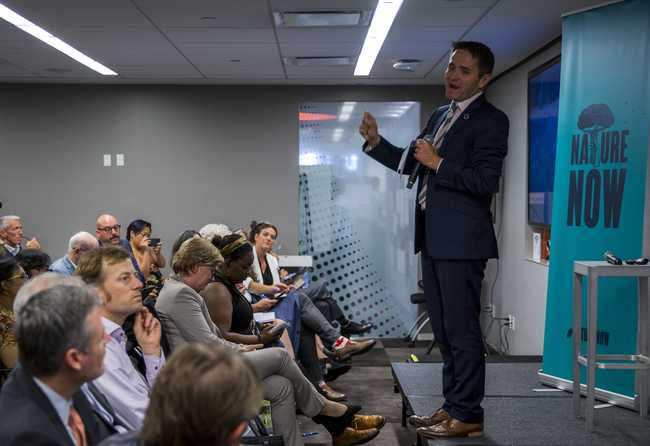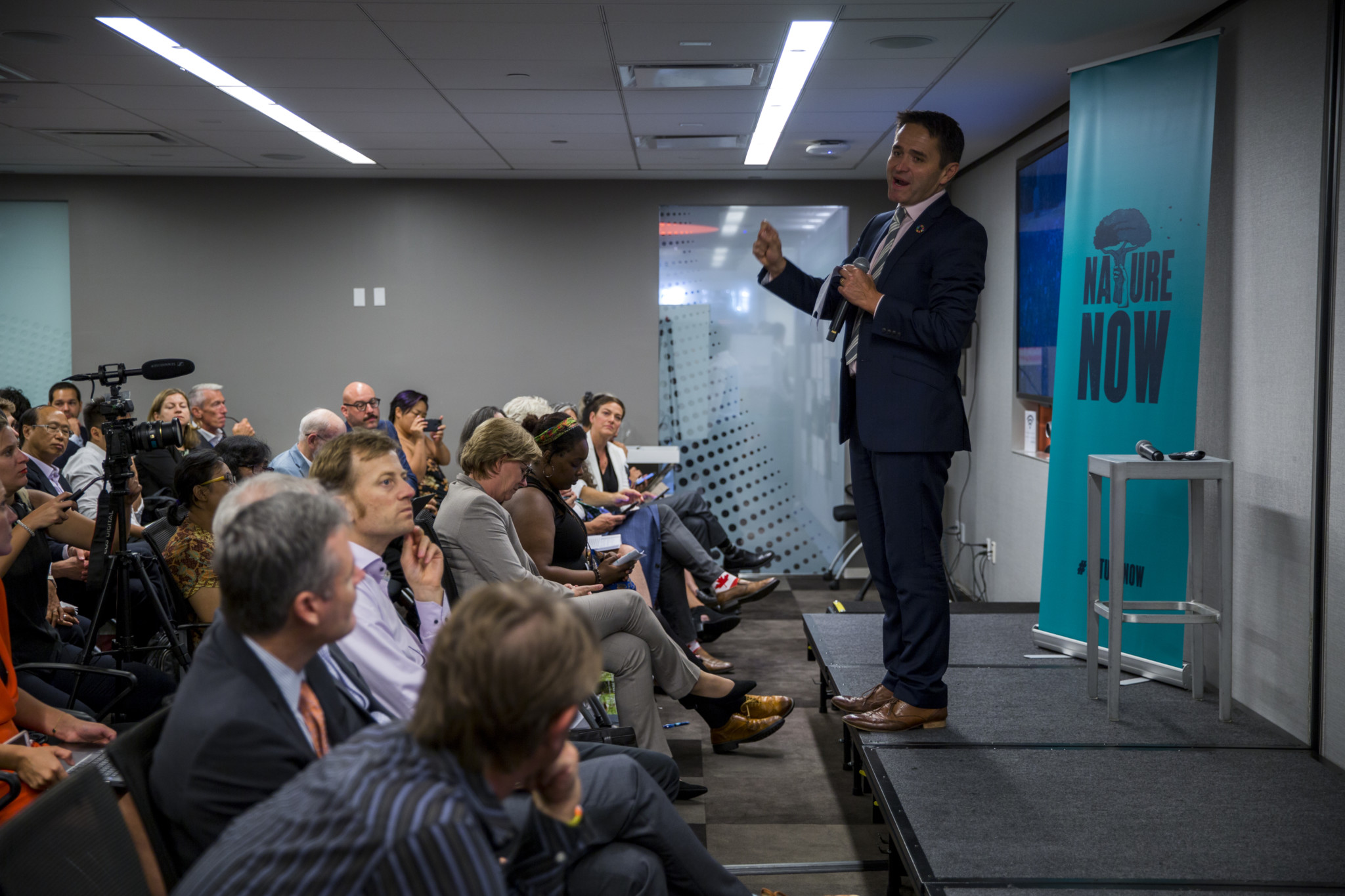
As the dust settles, post-New York Climate Week and the Sustainable Development Impact Summit running alongside the UN General Assembly, it’s an opportune moment to reflect as we work to mobilize more action to tackle the climate crisis. Justin Adams, Executive Director at the Tropical Forest Alliance shares five stand-out take-aways, and how this begins to lay out the pathway for concrete action in the next decade.
Read more
Related articles for further reading
Tuesday 15th September
By Executive Director, Tropical Forest Alliance — Justin Adams
As the dust settles, post-New York Climate Week and the Sustainable Development Impact Summit running alongside the UN General Assembly, it’s an opportune moment to reflect as we work to mobilise more action to tackle the climate crisis.
There is much to lament in terms of the effectiveness of such large gatherings and there is certainly still a lack of ambition on the part of governments and companies to take the necessary steps to avert the worst impacts of climate change. Yet it is also always a welcome energy boost for the people working on solutions to get together and to remind ourselves of common cause. To top this off there was added poignancy as the UN Secretary General had called a Climate Action Summit.
This year five take-aways stood out, they also begin to lay out the pathway for concrete action in the next decade.

Power of youth
The youth involvement was the biggest story of the week. The voice of young Swedish activist Greta Thunberg was most prominent, but many more voices were talking on behalf of future generations. For example, Marina Melanidis, project leader of Youth4Nature made a strong statement that young people want a chance to co-design the future. This determined and genuine contribution by the youth set the atmosphere and created a very different energy – a sense of possibility and increased urgency permeated all the discussions.
Centrality of nature
Nature finally had a proper seat at the climate table. The stage was set from the beginning through the endorsement by 32 countries of the Nature-Based Solutions for Climate Manifesto, an effort led by China and New Zealand supported by UN Environment and David Nabarro, Director of 4SD. Further proof for nature’s strengthened role was that more than a third of all side events had an element related to nature-based solutions. Thanks to the excellent work of the Nature4Climate initiative and all its partners at the Nature’s Climate Hub, this led to a large number of related official announcements. Nevertheless, we clearly still have a long way to go. The New York Declaration on Forest (NYDF) Assessment points out that the rate of forest loss is still off the charts with deforestation rates up 44% since the NYDF was signed five years ago. Yet, the increased importance given to nature as a solution puts us on a path to shape a forest positive future.
Necessity of transformational partnerships
Transformational partnerships are critical to accelerate nature-based solutions, be it to build bridges between governments and markets or to exchange best-practices on efforts to stop deforestation. As a result, I continue to stress that we need to move from a decade of individual action to a decade of collective action.
We are already seeing first signs of these transformational partnerships falling into place. Peter Freedman the CEO of the Consumer Goods Forum and several of the leading CGF companies talked about launching High Ambition Coalitions in 2020 to accelerate the work to reduce deforestation in supply chains.
In this setting, platforms like the Tropical Forest Alliance have never been in a more important position to catalyse collective solutions. Moreover, it has become increasingly clear that we need public-private partnerships where smart regulation complements voluntary corporate action to stop commodity-driven deforestation. The assertion that “this may soon lead to new EU-wide regulations with the aim to ensure deforestation-free products” by First Vice-President of the European Commission, Frans Timmermans provided a hint of how the movement may evolve in the coming years.
Importance of locally led solutions
Every time we stop and listen, we hear about smart, local solutions. We need to strengthen support for bottom-up approaches and avoid solutions being ‘imposed’ from North to South. It is crucial to build more bridges to fully integrate the local knowledge. This was powerfully demonstrated by Colombian President Iván Duque’s leadership in building a locally owned pan-regional strategy for the Amazon basin through the Leticia Pact. Another important initiative in this regard is a conservation mechanism for the Cerrado, a critical deforestation front in Brazil. The mechanism has been designed in Brazil to make a clear ask for international businesses to support local producers conserve more forests.
Value of finance
Who is going to pay? This remains a key question. Norway’s announcement to pay $150 million to Gabon for keeping 88% of its land covered in trees intact over the next ten years is welcome news particularly as they also agreed to double the price paid of carbon to $10/tonne. Additionally, the launch of a new REDD+ initiative called Emergent with an architecture for results-based payments paves the way for more finance for forests. One of the bigger opportunities highlighted in the new report by the Food and Land Use Coalition would be to redirect agricultural subsidies which add up to about $1 million per minute globally and drive 80% of biodiversity loss. The PRI statement signed by 230 investors representing more than $16.2 trillion sent a massive signal to countries and companies still wrestling with deforestation. Overall there is more positive momentum from the finance sector, but we still have a long way to go.
In conclusion, whilst good progress has been made, the nature of the challenge has also changed. The success of current and future efforts depends greatly on communal pursuit of more action-oriented pathways. A move from individual incremental action, to collective transformational action. Bottomline, it’s time for innovative approaches that progress environmental preservation alongside economic prosperity. These five take-aways along with the energy I drew from the week provide me the impetus for how we can accelerate collective efforts to shape a forest positive trajectory and collectively tackle the environmental challenges we face.